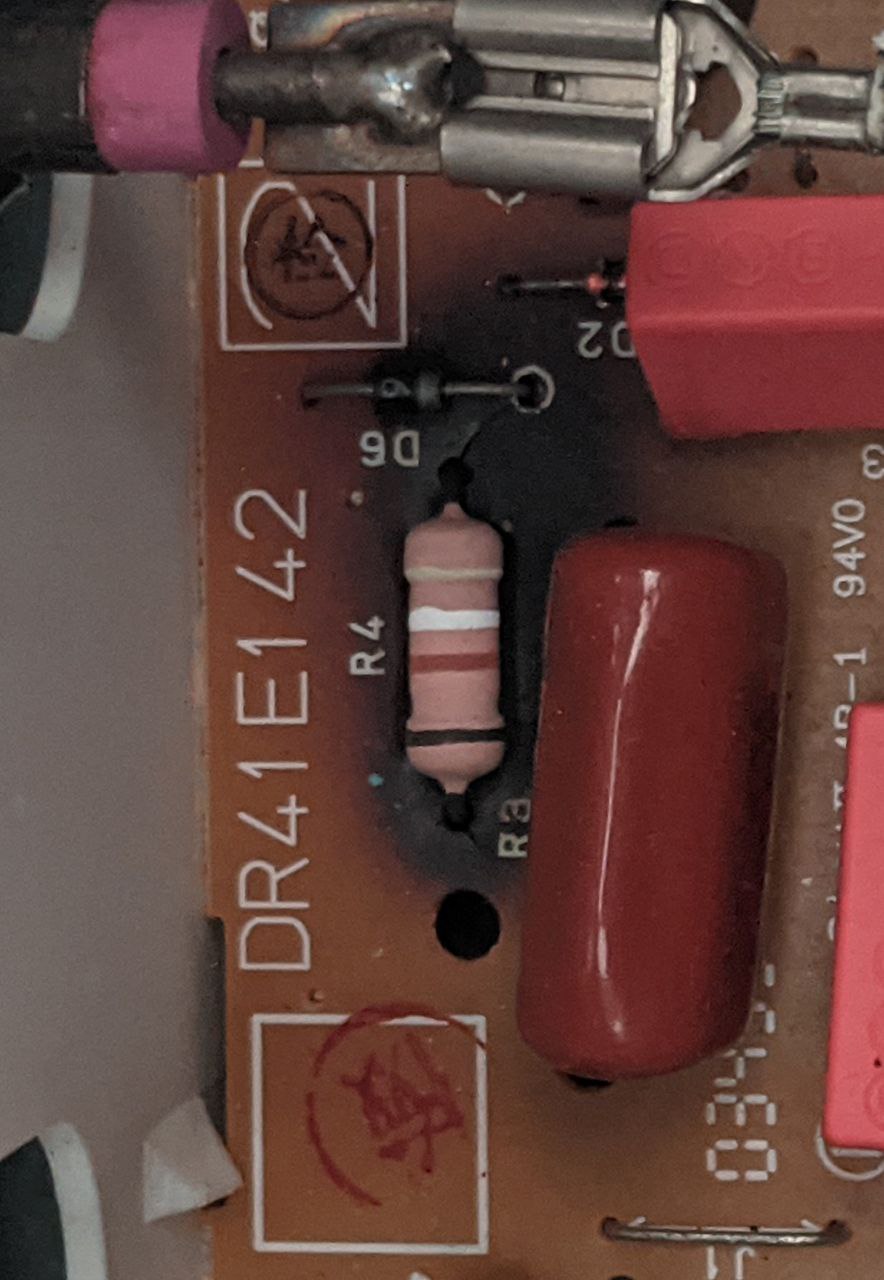It looks like 1GΩ (black-brown-white gold). But that doesn't sound likely unless you have a very high voltage bread maker.
If we treat the black band as discolored-brown, and read it the other way, we get (yellow - white - brown - brown) which is 490Ω and closer to your measured value. I wouldn't rule out (yellow - white red - brown) either at 4.9 kΩ, although that doesn't match closely to your measurement.
A good question is 'why did the resistor burn?'. If I didn't know why, then I would assume that replacing it will just result in it burning again, although maybe not immediately.

